Computer Slow After Nvidia Driver Update: 8 Quick Fixes
Usually, updating the drivers on your PC is an important part of maintaining system performance, compatibility, and security. However, it doesn’t always go to plan. If you are experiencing a slow computer after updating your Nvidia graphics card driver, you’re not alone.
I had the same problem after making a routine update via the GeForce Experience app that Nvidia uses for releasing new drivers.
Upon further research, here are the many reasons why an Nvidia driver update can make your computer slow, and how you can fix it.
Why is my computer slow after Nvidia driver update?
There are several reasons why your PC might experience slowness after updating an Nvidia graphics driver. Common causes include:
Installation Errors – Interruption of the driver installation process could result in a malfunctioning driver. A corrupted or incomplete installation can cause performance issues and crashes.
Malware – Viruses and malware can target drivers and other areas of the system that relate to your graphics card.
System Corruption – Many system files and DLLs interact with Nvidia drivers and if these are corrupted or missing, the issue may become more pronounced after updating the driver.
Older Hardware – Newer drivers may not be optimized for older hardware, leading to performance problems. In some cases, it might be more suitable to use an older driver version that is better tailored to your hardware or consider upgrading to a more modern graphics card.
Bugged Driver – It is not uncommon for Nvidia drivers, like any other software, to have bugs that make your computer slow. While the aim is to release driver updates to address bugs, occasionally new issues may arise.
Overclocking Conflicts – If you are using third-party software for overclocking or optimizing GPU settings, the new driver might not be compatible with these tools, resulting in slowness.
Default Settings Changes – The updated driver might have changed default settings, including performance-related options. Check the Nvidia Control Panel settings for any adjustments that could impact performance.
How to fix a slow computer after Nvidia driver update
Unless there is a serious problem, a slow computer will not prevent you from troubleshooting and fixing the problem within Windows. If you suspect the driver itself is bugged, keep a look out on Reddit and the official Nvidia site, as they will usually address the problem publicly.
The following steps and methods helped solve the problem with my own Nvidia driver.
1. Scan for Malware
To ensure your slow computer isn’t related to a malware infection, you should always start by performing a full system scan. You can do this with Windows Defender under the Virus & threat protection area of Windows or a reputable third-party antivirus like Avira or Norton.
2. Update Windows
Sometimes Windows can get out of sync with your drivers if you have been stalling updates, so it’s always a good idea to perform the latest updates before fixing the problem at hand.
If a previous Windows update fails, this itself can cause missing or corrupted system files that may play a role in the functioning of GPU drivers.
3. Reverse Overlocking
If you have been running an overclocked graphics card, the driver update may be in conflict. So, even if just temporarily, go back to the default clock settings and either rollback the driver or reinstall it before considering overclocking again.
4. Rollback the Nvidia Driver
If the latest driver is causing problems, it stands to reason that you should try going back to the previous version.
1. Use the start menu search and type device to find the Device Manager.
2. Within the Device Manager, scroll down until you find Display adapters.
3. Click the arrow and right-click on your Nvidia device, then open Properties.
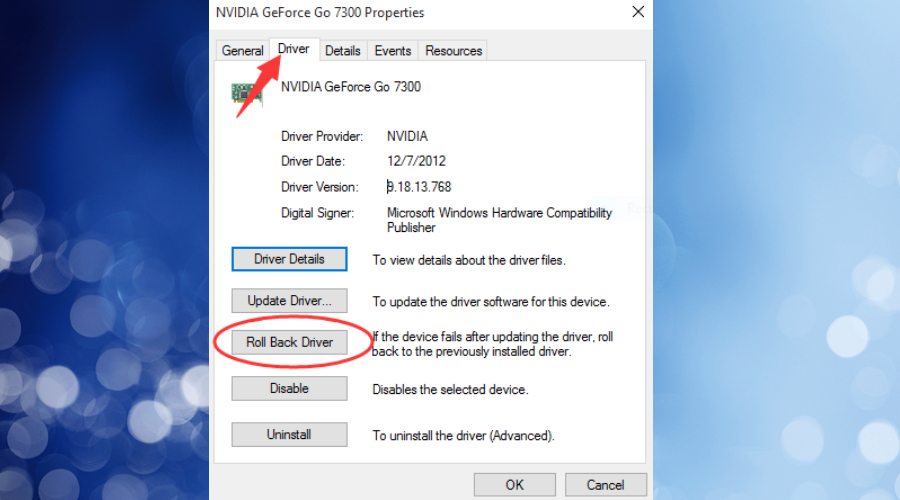
4. Go to the Driver tab and if available click the Roll Back Driver button.
If this button is greyed out, you may need to manually uninstall and then reinstall the driver version of your choosing. See step 6 below.
5. Reinstall the Driver
If you have the Nvidia GeForce Experience software installed, you can reinstall a troublesome driver to see if it solves your slow computer problem.
1. Launch Nvidia GeForce Experience and click the Drivers tab at the top.
2. Scroll down to where it says Currently Installed and note the number and details.
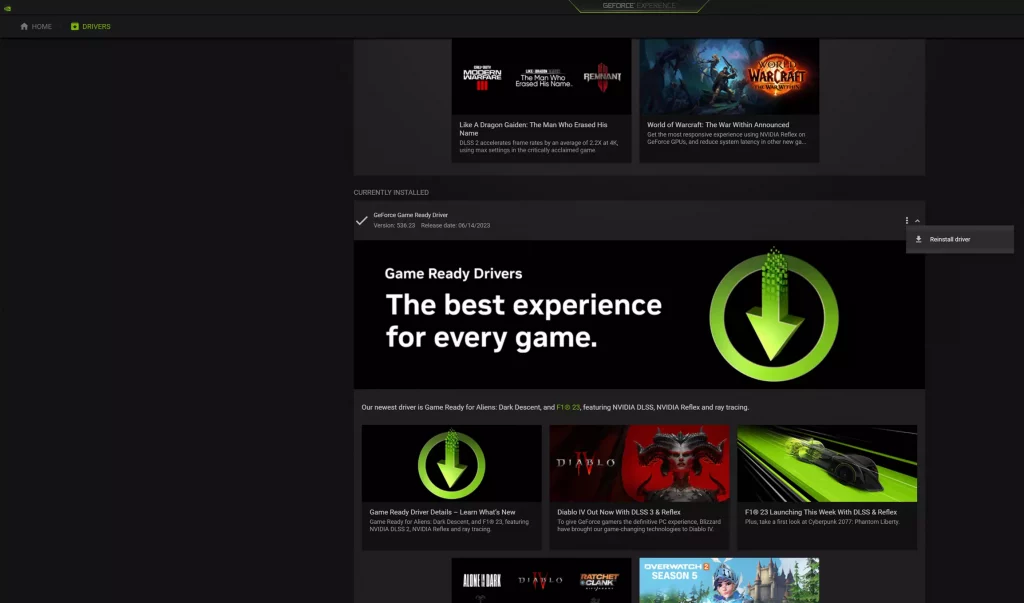
3. Click the three dots and choose Reinstall driver.
6. Uninstall and Reinstall the Driver
Sometimes it’s better to start fresh than to rollback or reinstall a driver as the remnants left behind can interfere.
1. Go to the official Nvidia drivers download page and use the dropdown boxes to choose your make and model.
2. Remember the driver version you noted down previously? Select the version released just before that one and download the files.
2. From the Device Manager, scroll down until you find Display adapters and your Nvidia device.
3. Right-click and choose Uninstall Device, then follow the prompts to complete the process.
4. If the driver came with an installer, simply run the installer. If not, allow Windows to automatically install its base-level driver.
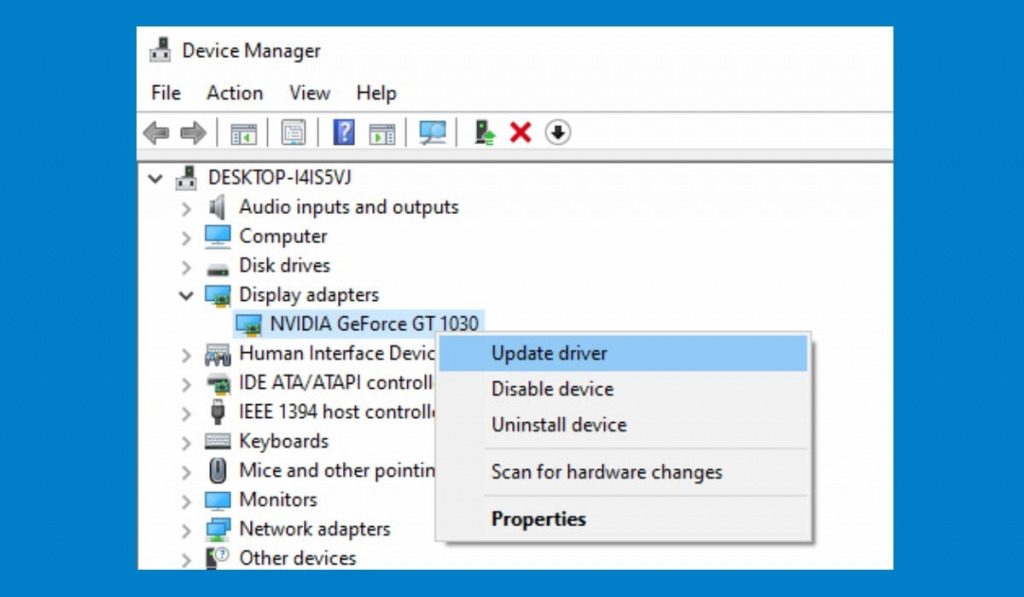
5. Go back to the Device Manager, find your GPU, right-click and choose Update Driver. Then browse to the driver files you downloaded earlier.
7. Use Fortect to Repair Windows
Fortect is an all-in-one Windows repair tool that can solve many hidden issues that can contribute to a slow computer after an Nvidia driver update. It replaces missing or damaged system files, Windows registry values, and cleans unnecessary junk from your hard drive.
1. Download and Install Fortect on your computer.
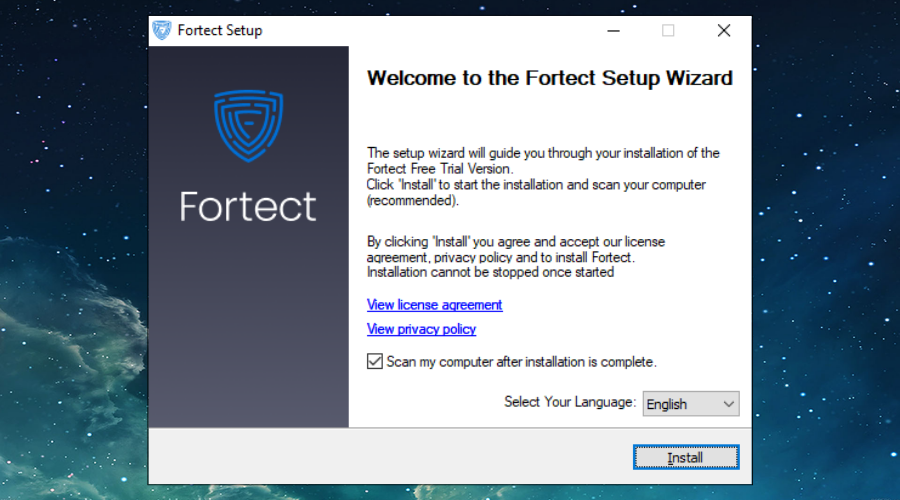
2. Launch the software and run a scan.
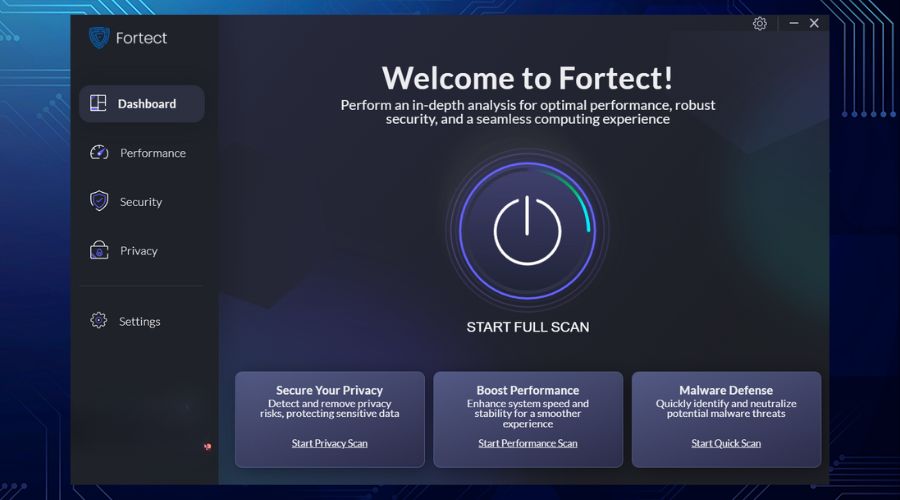
3. When the results appear, Click Start Repair and it will automatically repair the system with clean files from its database.
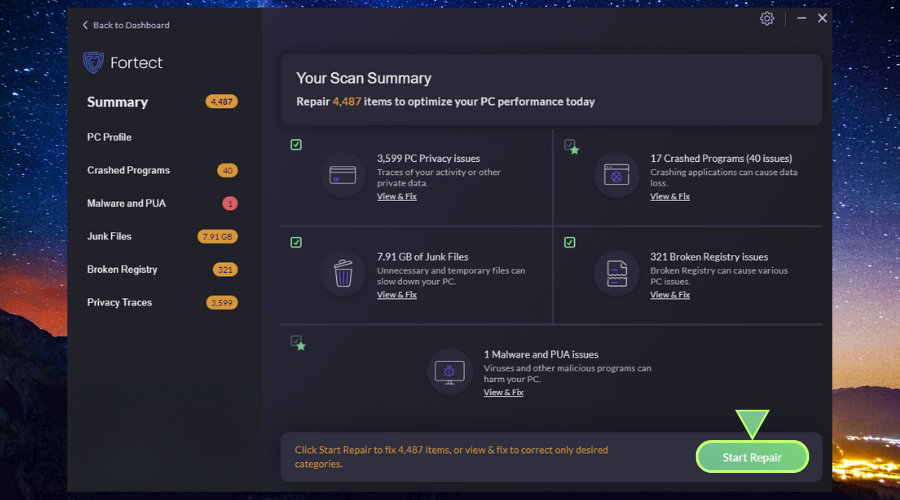
Fortect also displays a hardware summary which can give insight into things like overheating or unrecognized devices.
8. Use a Restore Point
If all else fails, you can try loading a restore point from before the driver update. This rolls your entire system back, so any user settings, system files, and drivers revert to their previous state.
1. Use the start menu search bar and type restore to locate the Create a restore point tool.
2. From the Recovery window, click Open System Restore.
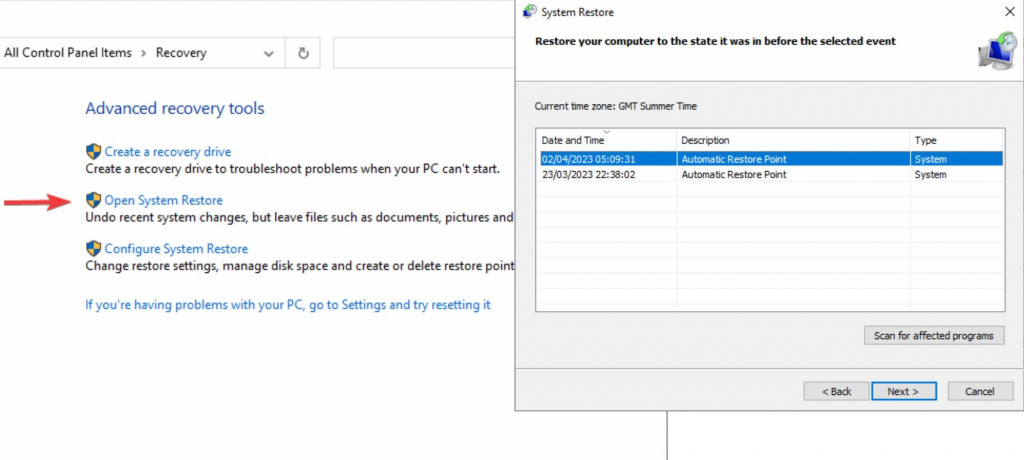
3. Choose a restore point date prior to the driver update.
4. Your PC will restart to complete the process.
Final thoughts on slow computers after an Nvidia driver update
It can be frustrating when your PC slows down following an Nvidia driver update, especially when we’re always told it will improve performance and compatibility.
Fortunately, by following the steps above, most users will be able to revive their computer and even improve performance with a tool like Fortect.
However, if nothing solves the issue, it may be time to consider upgrading your hardware.




